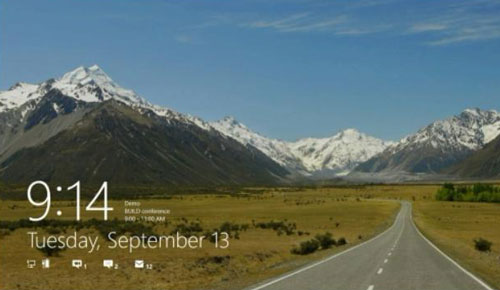 With the release of Windows 8.1 this week, Microsoft did an about-turn and brought back the Windows “Start” button, found on Windows computers for 17 years until the company killed it off in 2012 in Windows 8.
With the release of Windows 8.1 this week, Microsoft did an about-turn and brought back the Windows “Start” button, found on Windows computers for 17 years until the company killed it off in 2012 in Windows 8.
The Start button has a storied history, having first appeared in Windows 95 as a way for users to get quick access to their applications, settings and folders. It was an ingenious feature at the time. Microsoft even paid the Rolling Stones to use one of their classic (and rather racy) tunes, “Start Me Up”, to market it.
But by 2012, the Start button had got in the way. Microsoft was eyeing the success of Apple’s iPad with envy and Windows 8 was all about retooling its flagship operating system — the one that powered the client-server era of computing — for an era of touch-driven mobile devices fuelled by online-based “cloud” services.
So, gone was the Start button, replaced with a modern, tile-based interface and support for swipes and gestures designed for a finger use rather than keyboards and mice.
Of course, Windows 8 still has the traditional desktop — Microsoft couldn’t be too radical in its approach — but one has the distinct impression that the desktop as we know it is living on borrowed time.
Microsoft will probably want to make a break from this desktop legacy as quickly as possible as it reinvents itself as a “devices and services” business.
It may be hindered by its legacy, but Microsoft needs to move fast if it wants to remain a key player in consumer tech. Despite its billions in cash and continued healthy cash flow, it is facing the biggest battle for relevance in the consumer market in decades.
Mobile and cloud computing are turning the IT industry on its head and the client-server era is ending. The companies that dominate one epoch tend not to rule the next. IBM dominated the mainframe era; today it’s still a big and profitable services company, but it no longer defines innovation in technology or the industry’s direction. It’s become big, safe, boring.
If Microsoft simply focused its efforts on the corporate market, where selling Windows and Office licences would probably keep its income statement looking healthy for years, it could spend the time figuring out how to provide more of the consulting-type services to the business world that have become IBM’s bread and butter.
But that’s not Microsoft. This is a company that desperately does not want to build an army of consultants in suits and ties. It’s not in its DNA. It does not want to be IBM. Instead, it’s fighting a rear-guard action against a wide range of old and new adversaries in an effort to re-establish itself in an industry where it’s simply not as important as it once was.

Sure, Microsoft still leads the market in PC operating systems and desktop-based productivity software. But the PC market is declining as consumers flock to tablets and smartphones. Microsoft’s core business is being eroded. It needs to act.
But it has a long way to go to catch up. In search, Bing is a tiny speck in Google’s rear-view mirror; in smartphones, its Windows Phone software gets good reviews but it’s still tiny behind Google’s Android, which looks set to dominate the mobile era as thoroughly as Windows did in client-server computing.
Microsoft is doing better in cloud services, but it’s doing battle with Google on almost every front. Its new Office suite — still the best in the business for power users — is married to the online world and integrates tightly with Skype.
But in the mobile world it’s facing a real uphill battle. Its answer to the iPad, the Surface, was a flop. And its acquisition of Nokia’s devices business is probably its last chance to build meaningful market share in smartphones.
The reintroduction of the Start button this week doesn’t really mean much — clicking it still brings up the modern tile-driven interface. But perhaps it symbolises just how hard it is going to be for Microsoft to make a clean break from its past.
- Duncan McLeod is editor of TechCentral. Engage with him on Twitter
- This column was first published in the Sunday Times




